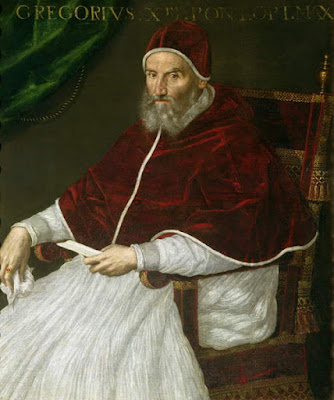For the primitive men, it was always tempting to use the Moon to measure time. They had understood its periodic behavior and its relationship with some nature’s cycles. That led to design the first Lunar Calendars. But as time passed, the failures of those calendars became evident: the time of every season began to slip through the months. Hence, how would they choose the best time for planting and harvesting?
 |
| The valley of the Nile. Source: NASA |
In Egypt, by the year 3000 bC. they had an useful calendar, based on the Sun cycles. Curiously, that calendar was not due to a better knowledge of astronomy or maths… if we compare them with other ancient civilizations. There were some practical and intuitive reasons to achieve that undeniable progress. It was all due to the Nile floods! The pharaohs’ land survived thanks to the fertility of the flooded lands, after the water withdrawal. They had found that the river took three hundred and sixty five days to rise again. It sure was quite a surprise, when they noticed that it was the same time for every cycle of the Sun.
 | |
| Julius Caesar. By Nicholas Coustou, 1696. Louvre Museum. Photo: Marie-Lan Nguyen, 2006. |
For many years, day by day, the Egyptian astronomers had studied the changes of the Sun trajectory. They measured the projected shadow from tall objects at noon (sure they used pyramids and obelisks as gnomon). At their first observatories, they also marked the position of the Sun at dawn or sunset. They finally understood its periodicity and knew how many time it took for every cycle. If they followed Sirius, the brightest star in the firmament, they found the same result. In the ancient Egypt they celebrated the new year, the day this star appeared to the east, just before dawn. So they began to use a Solar calendar… with twelve months of thirty days, adding five days at the end, to complete every year. Of course, that calendar had its flaws, because they were not able to measure the length of a year with a higher precision. But the Egyptians used it for many centuries; even Julius Caesar adopted it for Rome. Still in the 16th century, Nicolaus Copernicus used it, to calculate his planetary tables.
 | |
| The Coloseum by night. By Franz Ludwig Catel, ca. 1830. The Hermitage Museum, St. Petersburg, Russia. |
 |
| The escape from Egypt. Illustration of 1907. Source: The Providence Lithograph Co. |
Is important to keep in mind, that the Christianity came from a split of the Jew Religion. As a consequence, although is not well known, several Christian religious festivities have no fixed date. It means that they are still under the influence of the old Moon calendars. Until the 325 AD, the commemoration of the death of Jesus was on the same Easter Day of the Jewish. But, since the Council of Nicaea, the Christians began to celebrate the Resurrection Easter. It would be the following Sunday after the first full moon of the Boreal spring. And that Resurrection Sunday, automatically fixed the Holy Thursday and Friday every year.
According to the Christian dogma, Jesus died on a Friday and resurrected the next Sunday. But this gave rise to conflicts between two groups. Their differences would be irreconciliable; it caused one of the first schisms, of Christianity. The eastern church (Orthodox) maintained the original day for Easter. It had to be when the first full Moon of spring, no matter the day of the week. But, for the western church (Roman), Resurrection Easter had to be on Sunday, as the Council of Nicaea had established. As we may understand, locating the date of Resurrection Easter in the Solar calendar became a very important matter... due to its enormous symbolic meaning for the Christians. That is why the Holy Week does not have a fixed date, and is always moving between the months of March and April.
To do that, someone had to predict the Moon phases and put them in the Solar calendar. Very likely, from then on, man began to represent the phases of our satellite in the calendars, as we see nowadays. The task of predicting it for several years, was assigned to the bishop of the city of Alexandria. He counted on with the most important astronomers of those times. However, the discord and division inside the Christian Church continued. As a consequence, the Easter celebration began to take place on different days, in some places.
 |
| The Pope Gregory XIII. By Lavinia Fontana. Source: The Bridgeman Art Library. |
We can easily realize how men have always dedicated great efforts to the measure of time. Such an intangible factor, only perceived when matter undergoes a series of changes. So important for the universe relativity, and the object of permanent expectations… because it works as our living time meter. And, what if men someday manage to travel through time? Fantasy or reality, sure there are still many secrets to unveil. In the meanwhile, the Sun and the Moon, impassible will continue, as witnesses of the works of these little organisms that we are!
No hay comentarios:
Publicar un comentario